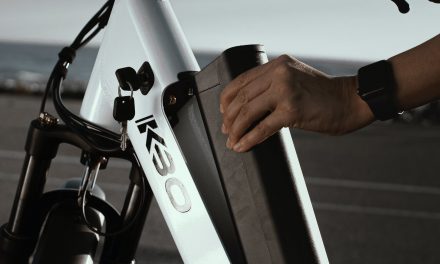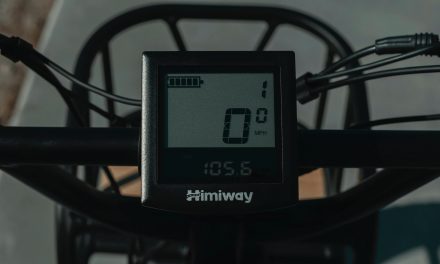Maintaining an e-bike in its working condition can be an uphill task, especially if you’re a newbie. One challenge you may encounter is when the bike’s motor only works when the battery is plugged into the charger. This is unfortunate as it means you can’t ride the bike, not unless you take the power outlet with you.
You can fix an e-bike that only works when plugged in by deep charging the battery, checking the voltage, checking for loose connections, and determining the battery’s lifespan. The main problem is that the bike’s motor can receive direct power from the power source, not the battery.
In the rest of this article, I’ll take you through fixing an e-bike that only works when plugged in. I’ll also share some tips on how to keep your bike’s battery in the proper working condition. Keep reading!
1. Deep Charge the Battery
Lead-acid batteries are prone to losing cell capacity with time. When this happens, the cells won’t hold enough power to sustain your bike’s operation. Therefore, the bike will only work when plugged in.
Deep charging a battery helps the cells regain their capacity to store enough charge for riding. It involves charging the battery for longer than usual, between 48 to 72 hours. However, you should charge it at a low rate, such as two amps or lower.
Before deep charging the battery, it’s best to check its voltage level. It should be around 12 volts if the cell has enough power. If not, then a deep charge is necessary.
It’s advisable to deep charge your battery several times a year or whenever you notice a significant decline in capacity.
2. Check for Loose Connections
A loose connection creates an open circuit that deters current flow from the battery to the motor. In this case, the bike might only work when plugged in as the motor receives alternating current from the power source.
It’s advisable to check for loose connections in the battery’s terminals and wiring. You should tighten any loose connections you come across.
You can also inspect the bike’s control module, brake lever, throttle, and display. Make sure they are securely attached and functioning properly.
Here is how to inspect for loose connections:
- Turn off the bike’s power.
- Disconnect the battery.
- Visually inspect the terminals and wiring for any signs of corrosion or damage.
- Use a multimeter (like this one) to check the continuity of each connection. The multimeter should read zero ohms for continuity if no open circuits exist.
3. Determine Battery Lifespan
Like any other technological gadget, electric bike batteries have a lifespan beyond which they can’t store charge. What this means is that the battery can only have charge when plugged in.
If you’ve tried deep charging and fixing the loose connections but still encounter the same problem, it might be time to consider replacing the battery.
You can determine how much life your battery has left by checking its capacity in relation to its original specifications in ampere-hours. The ideal range is between 80-100%. If it’s below that, it’s time to replace the battery.
A capacity tester is the best tool to check if the battery’s capacity is low.
Alternatively, you can check the battery’s lifespan as specified by the manufacturer. Most e-bike batteries have a lifespan of three to five years. Therefore, if you have been using the battery for more than its lifespan, it may be time to replace it.
4. Check the Battery’s Voltage
Most electric bikes have 48 and 52-volt batteries. A battery’s voltage is essential as it determines the amount of pressure pushing current from the battery to the motor.
Before deep charging or replacing the battery, it’s best to check its voltage. You can do this using a multimeter by connecting it to the battery’s terminals. Depending on your bike’s battery type, the multimeter should read around 48 or 52 volts.
Here is the right procedure to get the correct voltage reading:
- Set the multimeter to match your battery’s voltage. In this case, it can be 48 or 52 volts.
- Connect the multimeter’s probes to the battery’s terminals. The black probe should go to the negative terminal and the red probe to the positive terminal.
- Wait for the multimeter to record a stable voltage value.
Check the YouTube video below for a demonstration of how to test your battery’s voltage:
A considerably low voltage indicates that the battery’s cells have deteriorated. Therefore, if deep charging the battery doesn’t solve the problem, the only solution is to replace the battery.
5. Determine the Last Time You Used the Battery
Batteries self-discharge when left uncharged for long. The more the battery discharges, the more it loses its capacity.
You should ask yourself when you last charged and used the electric bike. If it’s within six months, then the battery should be fine. Otherwise, if you left the battery uncharged for more than six months, it might have self-discharged considerably to an extremely low voltage. In this case, the battery pack can’t be recharged again, which is why your e-bike only works when plugged in.
The only solution to a self-discharged battery is to replace it.
How To Maintain Your E-bike Battery
Taking good care of your electric bike’s battery can extend its lifespan and ensure optimal functioning. It’s an excellent way to ensure the battery holds sufficient power to cover longer ranges.
Here are some tips for maintaining your e-bike’s battery:
- Avoid deep discharging the battery: Don’t drain the battery completely. Discharging the battery to zero percent can cause irreversible damage. It’s advisable to charge the battery when it gets below 40 percent.
- Store at room temperature: Extreme temperatures can harm the cells in the battery and decrease their capacity. Therefore, it’s best to store the e-bike battery at temperatures between 20 to 25°C (68 to 77°F).
- Follow the manufacturer’s charging instructions: Every battery has specific charging requirements. Thus, following these guidelines is essential for optimal functioning and longevity.
- Avoid charging the battery fully: It’s not recommended to charge an electric bike’s battery to 100%. Charging a battery from 0-100% counts as one charge cycle. Therefore, it’s best to charge the battery up to 80-90% and save the rest of the charge cycles. For more on that topic, check out our article: Should you ever charge your e-bike to 100%?
Final Thoughts
An electric bike that only works when plugged in indicates an issue with the power supply. It narrows down to the battery’s condition and connections. Therefore, the only way to fix it is by diagnosing the battery and connections for insufficient power.
Always check with the manufacturer before doing any work on the bike or its components yourself.














